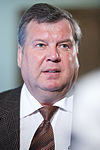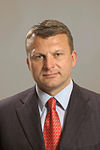Latvian parliamentary election, 2010
|
|
|||||||||||||||||||||||||||||||||||||||||||||||||||||||||||||||||||||||||||||||||||||||||||||||||
|---|---|---|---|---|---|---|---|---|---|---|---|---|---|---|---|---|---|---|---|---|---|---|---|---|---|---|---|---|---|---|---|---|---|---|---|---|---|---|---|---|---|---|---|---|---|---|---|---|---|---|---|---|---|---|---|---|---|---|---|---|---|---|---|---|---|---|---|---|---|---|---|---|---|---|---|---|---|---|---|---|---|---|---|---|---|---|---|---|---|---|---|---|---|---|---|---|---|
|
|||||||||||||||||||||||||||||||||||||||||||||||||||||||||||||||||||||||||||||||||||||||||||||||||
|
All 100 seats in the Saeima 51 seats needed for a majority |
|||||||||||||||||||||||||||||||||||||||||||||||||||||||||||||||||||||||||||||||||||||||||||||||||
|
|||||||||||||||||||||||||||||||||||||||||||||||||||||||||||||||||||||||||||||||||||||||||||||||||
|
|||||||||||||||||||||||||||||||||||||||||||||||||||||||||||||||||||||||||||||||||||||||||||||||||
Parliamentary elections were held in Latvia on October 2, 2010. It was the first parliamentary election to be held in Latvia since the beginning of the economic crisis during which Latvia had experienced one of the deepest recessions in the world.
A total of 1,239 candidates representing 13 parties or alliances stood in five electoral constituencies equivalent to the four regions of Latvia and Riga city. With 1012 of 1013 polling stations counted, results showed an increase in support for the incumbent coalition government of Valdis Dombrovskis, with 58% of the vote and 63 of the 100 seats.
It appeared that early elections would be held in early 2009, when the government was faced with violent protests over the effects of the global financial crisis of 2008–2009 on Latvia and some politicians saw early elections as the only way to confront the people's anger. The elections were to be averted if the Saeima passed constitutional reform laws, including a law to allow referendums on dissolving parliament, by 31 March 2009; if this had not happened, the President of Latvia, Valdis Zatlers, would have dissolved parliament.
After surviving a vote of no confidence in early February, PM Ivars Godmanis resigned on 20 February 2009 after the two largest parties (People's Party and the Union of Greens and Farmers) called for his dismissal. A new government was formed, headed by Valdis Dombrovskis. There were also discussions that President Zatlers might use the parliamentary dissolution power of Latvian President to call a referendum on holding early elections. Zatlers stated on 23 February 2009 that early elections might be necessary, and that he was willing to extend the deadline for reforms from 31 March for one week to 7 April 2009 due to the collapse of the government.
...
Wikipedia





